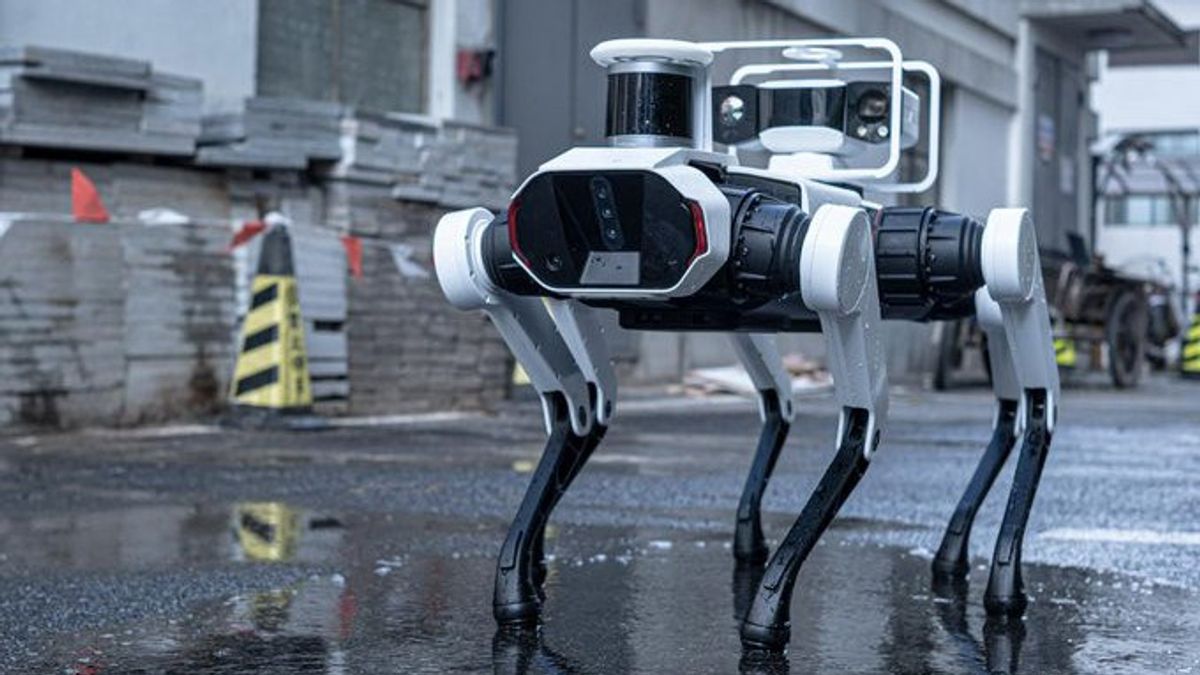JAKARTA - Police in Malaga carried robotic dogs on an attempted patrol in downtown Spain on Tuesday, March 19, which was considered fun for the audience. Some of them even imitated awkward steps or introduced their pets to a spinning device with flickering lights on it.
This Robo dog was designed by Malaga University researchers over the past two years to support police work and detect traffic violations such as the use of electric scooters in restricted areas. The green and black four-leg robot is still remotely controlled for now, but will eventually integrate artificial intelligence to work alone.
"What stands out in this project is that we use 5G technology for remote operations of robots, to perform image analysis, and detect dangerous situations," said researcher Almudena Diaz.
Robo dogs, which can be translated into "robot dogs", are dog-shaped robots designed to move and interact with the surrounding environment such as real dogs.
관련 항목:
Here are some common characteristics of robo dog:
Mobility: Equipped with flexible motorized legs and joints, so that they can walk, run, and even climb on various terrains.
Sensors: Equipped with various sensors such as cameras, lidar (laser imaging, detection, and ranking), and other sensors to be able to detect and interact with the surrounding environment.
Artificial Intelligence (AI): Some advanced robo dogs are equipped with AIs that allow them to learn and adapt to their environment.
Here are some robo dog functions:
Assistance to the police: Can help patrols, crime scene investigations, search and rescue.
Assistance for the military: Can be used for reconnaissance, delivery of goods, and handling of explosives.
Assistance for civilians: Can be used to help people with disabilities, maintain security, and entertainment.
Currently, the robo dog is still in the development stage. However, the potential to help humans in various fields is very large. Several countries have started using Robo Dog for various purposes.
Here are some countries where robo dogs have been applied to help police:
The New York Police Department:menggak menggunakan robo dog untuk membantu dalam patrol, pencarian dan penyelamatan, dan penyelidikan TKP.
San Francisco Police Department: SFPD uses robo dogs to assist in park patrols and other public areas.
The Pittsburgh Police Department: PPD uses robo dogs to assist in patrols and crime scene investigations.
Dutch Police: The Dutch police used a robo dog to assist in patrols and investigations of the crime scene.
Belgian Police: Belgian police use robo dogs to assist in patrols and search and rescue.
German Police: The German Police used a robo dog to assist in patrols and crime scene investigations.
Singapore Police: The Singapore Police used a robo dog to assist in the patrol and investigation of the crime scene.
Japanese Police: Japanese police use robo dogs to assist in patrols and crime scene investigations.
South Korean Police: The South Korean Police used a robo dog to assist in patrols and crime scene investigations.
New South Wales Police: The New South Wales Police used a robo dog to assist in patrols and crime scene investigations.
Victorian Police: Victorian Police used robo dogs to assist in surveillance and crime scene investigations.
The benefits of using a robo dog in the police:
Concerns about the use of robo dogs in the police:
The use of robo dogs in the police is still in its early stages, but has the potential to assist the police in various tasks. However, it is important to consider the benefits and concerns of using robo dogs before being widely implemented.
The English, Chinese, Japanese, Arabic, and French versions are automatically generated by the AI. So there may still be inaccuracies in translating, please always see Indonesian as our main language. (system supported by DigitalSiber.id)

















